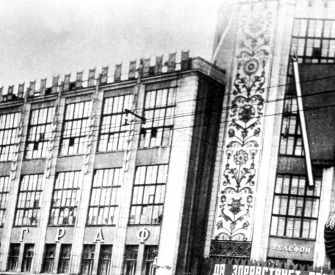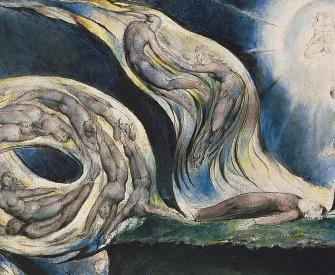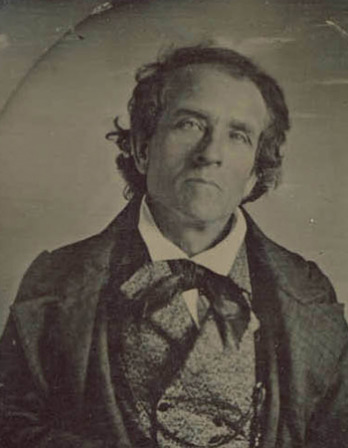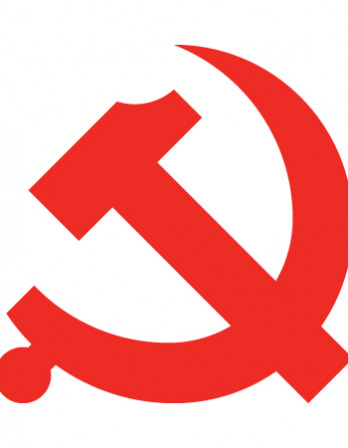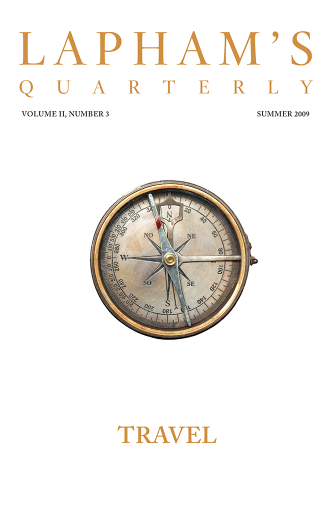Revolution can never be forecast; it cannot be foretold; it comes of itself. Revolution is brewing and is bound to flare up.
—Vladimir Lenin, 1918Market Corrections
“Is this what we made the revolution for?” Examining the origins and legacy of the New Economic Policy.
By Orlando Figes

Lenin addresses a crowd, c. 1917. Flickr Commons.
In all revolutions there comes a moment when the high ideals of the revolutionaries crash onto the hard rocks of reality. In Russia that moment came in March 1921, when the Bolsheviks retreated from their first attempt to introduce a planned economy—by which they had thought to impose communism by decree—and let back elements of private trade to rescue their regime from popular rebellions.
Chronic shortages had built up over seven years of war, revolution, and the Civil War, especially in the austere years of the latter, between 1918 and 1920, when the Red Army had fought against the Whites, and leather-jacketed commissars had waged another war on the market.
Townsmen traveled to the countryside to barter with the peasants, who were reluctant to sell foodstuffs for paper money when there was nothing they could buy with it. They left with bags of clothes and household goods to sell or exchange in the rural markets and returned with bags of food. The railways were paralyzed by these armies of “bagmen.”
Threatened by the disintegration of the urban working class, their main social base, the Bolsheviks declared a grain monopoly and dispatched armed brigades to requisition foodstuffs from the villages. Where they found none (because there were no surpluses) they assumed that it was being hidden by the kulaks—a term they had appropriated to describe a phantom class of “capitalist” peasants. They imposed a planned economy known as War Communism, the main purpose of which was to channel all production toward the demands of the army. It abolished private trade, nationalized all large-scale industry, subjected labor to military rules, and at its height in 1920 tried to replace money with a universal system of state rationing.
War Communism was the prototype of the Stalinist command economy. Both were driven by the notion that in a backward peasant country such as Russia, state coercion could be used to provide a shortcut to communism, eliminating the need for a long stage of capital accumulation through the market. By 1921, the system had enabled the Bolsheviks to win the Civil War, but it had brought the country to economic ruin and the revolution to the verge of collapse, with hungry workers on strike and widespread famine in the countryside leading to a series of peasant wars against the requisitioning.
On March 8 that year, at the Tenth Party Congress, Lenin abandoned the central plank of War Communism, introducing a tax in kind to replace the requisitioning. By allowing the peasants to sell their surplus on the free market once the tax was paid, the concession laid the groundwork for a New Economic Policy (NEP) through which the revolution would commit to “building socialism” with a mixed economy of private peasant trade, cooperatives, and state-controlled industries. Fearful that the delegates would denounce the tax as a restoration of capitalism, Lenin insisted that it was needed to quell the peasant uprisings, which were “far more dangerous than all the [Whites] put together,” and build a new alliance with the peasantry.
For Lenin the NEP was more than a temporary concession to the market in order to get the country back on its feet. It was a radical if ill-formulated effort to redefine the role of socialism in peasant Russia, where, largely as a result of his own party’s coup in 1917, the “bourgeois revolution” had not been completed. Only “in countries of developed capitalism” was it possible to make an “immediate transition to socialism,” he had said. Soviet Russia was thus confronted with the task of “building communism with bourgeois hands,” which for the Bolsheviks meant letting peasants create wealth through the market.
Lenin saw the NEP as a necessary concession to the peasantry to save the worker-peasant alliance on which the success of the revolution would depend. That alliance would be built on the exchange of manufactured goods and food. By allowing the peasants to sell their surplus freely after they had paid the 20 percent tax in kind, the NEP aimed to stimulate their market sales. This would feed the towns and through taxation raise the capital for state investment in the manufacturing of the basic household items the peasants wanted for their grain. By taxing this exchange and exporting food, the state would pay for the imported tools and machines it needed to industrialize.
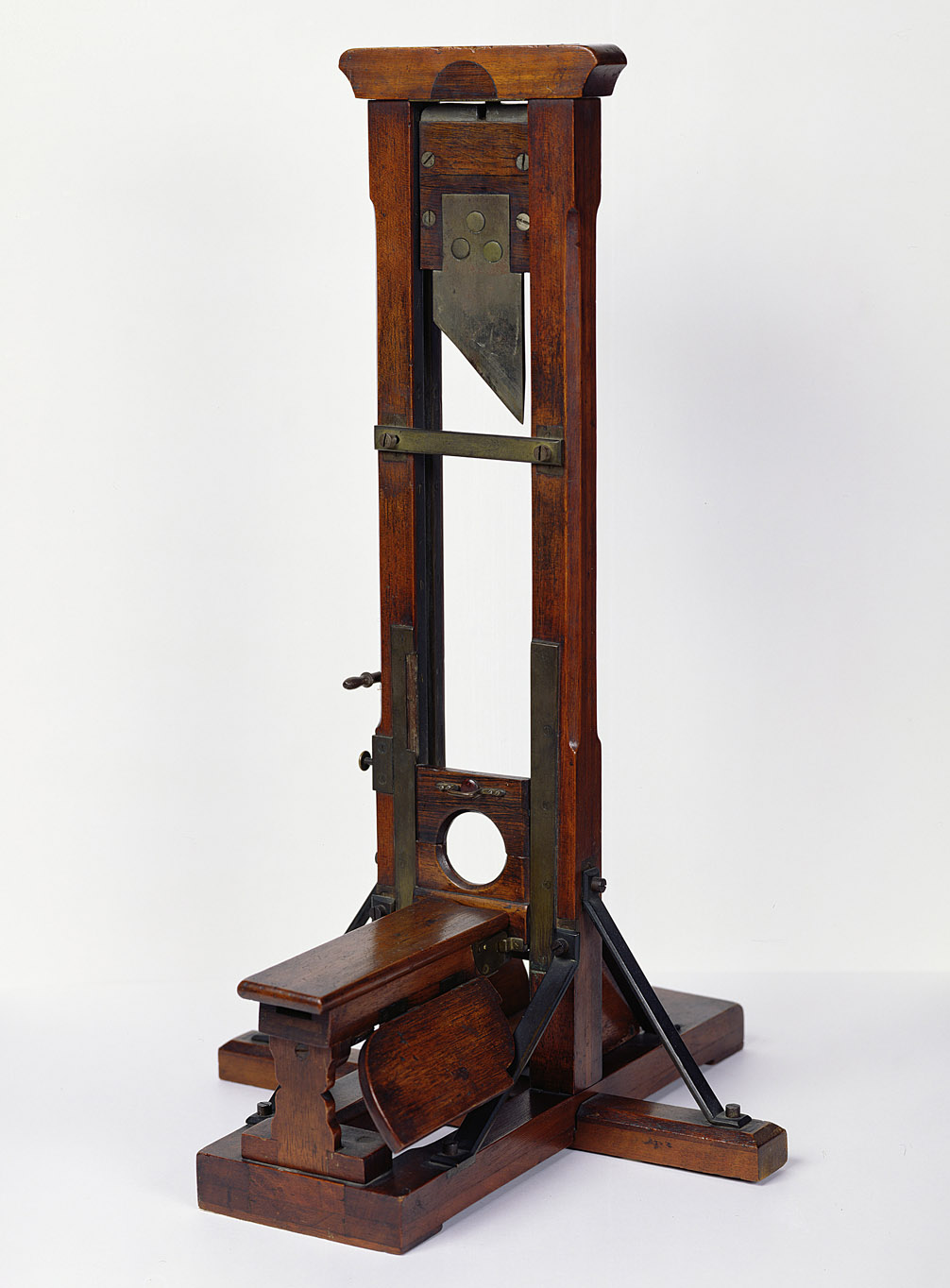
Model guillotine, France, 1876. Musée de la Ville de Paris, Musée Carnavalet, Paris, France. Giraudon, The Bridgeman Art Library.
The restoration of the market brought life back to the Soviet economy. Private trade responded instantly. People set up booths and stalls; flea markets flourished; peasants sold their foodstuffs in town markets; and “bagging” to and from the countryside once again became a mass phenomenon. Licensed by new laws, private cafes, shops, and restaurants, even small-scale manufacturers, appeared like mushrooms after the rain. Foreign observers were astounded by the transformation. Moscow and Petrograd, dying cities during the Civil War, sprang back into life, with noisy traders, busy cabbies, and bright shop signs livening up the streets just as they had done before 1917. “The New Economic Policy turned Moscow into a vast marketplace,” wrote Emma Goldman, the American anarchist, in 1924 in My Further Disillusionment in Russia. “Shops and stores sprang up overnight, mysteriously stacked with delicacies Russia had not seen for years. Large quantities of butter, cheese, and meat were displayed for sale; pastry, rare fruit, and sweets of every variety were to be purchased…Men, women, and children with pinched faces and hungry eyes stood about gazing into the windows and discussing the great miracle: what was but yesterday considered a heinous offense was now flaunted before them in an open and legal manner.”
To many Bolsheviks the return of private trade was a betrayal of the revolution. It seemed to them that it would lead to a widening gap between rich and poor. “We young communists had all grown up in the belief that money was done away with once and for all,” recalled one Bolshevik. “If money was reappearing, wouldn’t rich people reappear too? Weren’t we on the slippery slope that led back to capitalism? We put these questions to ourselves with feelings of anxiety.” Their doubts were reinforced by the rise of unemployment in the first years of the NEP. While laid-off workers lived on the breadline, the peasants, they assumed, were getting rich. Goldman, who had been deported to the Soviet Union in 1919, overheard a Bolshevik ask, “Is this what we made the revolution for?” Among the workers there was a widespread feeling that the NEP was sacrificing their class interests to the peasantry and that it would allow the kulaks to come back, and with them the capitalist system would return. Whereas War Communism had promised to arrive at communism fast by stamping out all signs of private trade, the NEP meant going more slowly toward the revolution’s goal—“on the peasant cart,” as Nikolai Bukharin, the Bolshevik leader and main theorist of the NEP, put it. Tens of thousands of Bolshevik workers tore up their party cards in disgust with the NEP: they renamed it the “New Exploitation of the Proletariat.”
Much of this plebeian anger was directed against “NEPmen,” the new class of businessmen who thrived with the return of private trade. In the popular imagination, shaped by Soviet propaganda and cartoons, the “NEPmen” dressed their wives and mistresses in diamonds and furs, drove around in huge imported cars, and boasted loudly in expensive hotel bars of the dollar fortunes they had wasted at the newly opened racetracks and casinos. The legendary spending of these nouveau riche, set against the backdrop of urban poverty, gave rise to bitter resentment among those who thought the revolution should end inequality.
The brutalities of progress are called revolutions. When they are over we realize this: that the human has been roughly handled, but that it has advanced.
—Victor Hugo, 1862The NEP had been presented as a strategic retreat. “We are taking one step backward to take two steps forward later on,” Lenin had assured the policy’s many doubters in 1921. But how long it should last was left unclear. The Bolshevik leader talked of “not less than a decade and probably more”—suggesting that the NEP was to be adopted “not as a form of political trickery” to save the revolution from popular revolts but “seriously” and “for an entire historical epoch.” He saw the NEP as a long-term program to advance toward socialism through a mixed economy. Responding to fears that it might allow capitalism to return, he argued that as long as the state controlled the “commanding heights” of the economy (e.g., steel, coal, the railways) there was no danger in allowing small-scale private farming, trade, and handicrafts to satisfy consumer needs.
Urban opposition to the NEP was sharpened by the occasional breakdown of the market mechanism—which was bound to happen after years of war and revolution—resulting in shortages of food in the state shops. The root of the problem was the absence of consumer goods to trade with the peasants. Industry was badly damaged by the Civil War. It took longer to recover than the peasant farms, which had bumper harvests in 1922 and 1923. The result was a widening gap (what Trotsky termed the “scissors crisis”) between deflated agricultural prices and steeply rising prices for consumer goods. As the price of manufactures rose, the peasantry reduced its grain sales to the state depots. The procurement rates paid by the state were too low for the peasants to afford the household items they needed—some of which they could make for themselves in their own cottage industries (plows, ropes, shoes, candles, soap, and simple wooden furniture). Instead of selling grain at low prices, the peasants fed it to their cattle, stored it in their barns, and sold it to the private traders and bagmen.
To combat the breakdown of the food supply, the government resorted to Civil War–style requisitioning, reduced industrial costs to boost productivity, and, in response to working-class resentment of the “NEPmen,” closed down 300,000 shops and market stalls. By April 1924 the immediate crisis had been solved. But the breakdown of the market remained a potential problem for the NEP.
The Bolsheviks were divided about how to deal with the issue. Those on the left of the party favored keeping agricultural prices low and taking grain by force if necessary to increase industrial production; whereas those on the right argued for higher procurement prices, even if this entailed slowing down the rate of capital accumulation for industrialization, to preserve the worker-peasant alliance and the market mechanism as the basis of the state’s relations with the peasantry.
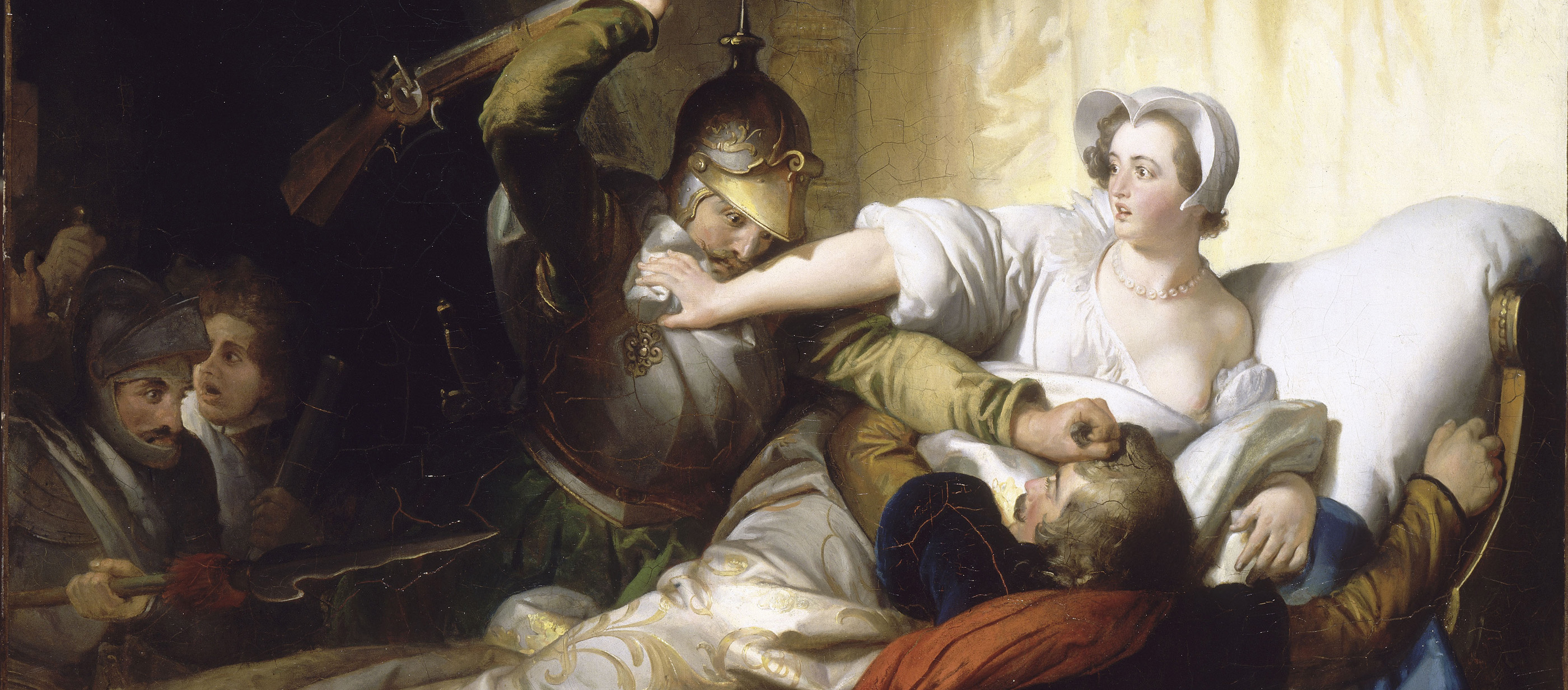
Scene of the Massacre of St. Bartholomew, by Alexandre-Évariste Fragonard, 1836. Margaret of Valois, the future queen of France, attempting to protect her husband, Henry of Navarre, during the French Wars of Religion. Louvre, Paris, France.
They were also disunited on the international context of the NEP. When the Bolsheviks had taken power, they had all assumed that the revolution would soon spread to the more advanced industrial societies. In their view socialism was unsustainable in Russia on its own because it lacked the industries it needed to defend itself against the “imperialist” powers. By the end of 1923 it was becoming clear that revolutions were unlikely in Europe. The immediate postwar instability had passed. In Italy the fascists had come to power to restore order. In Germany strikes backed by the communists had failed to develop into larger uprisings. Abandoning the idea of exporting the revolution as an immediate goal, Stalin, then serving as the party’s general secretary, advanced the policy of “socialism in one country.” It was a dramatic turnaround in the party’s revolutionary strategy. Instead of waiting, as had been universally assumed, for support to come from the industrial states, the Soviet Union would now have to become self-sufficient and defend itself by building industries with capital extracted from its own economy. It would export grain and raw materials to pay for tools and machines imported from the West. Developed by Bukharin, the idea was adopted as the party’s policy in 1926. But it was condemned by the Left Opposition—the Bolshevik faction headed by Trotsky—as a fundamental break from Marxist ideology, which ruled out building socialism in a single country isolated from the world.
The NEP entailed a reprieve for the remnants of “bourgeois culture” that the revolution promised to eliminate but could not yet do without. It brought a halt to the war against the professional class—the “bourgeois specialists,” technicians, engineers, and scientists—whose expertise was needed by the Soviet economy. It also meant a relaxation in the war against religion: churches were no longer closed or the clergy persecuted as they had been before (or would be afterward). Under Anatoly Lunacharsky—the Commissar of Enlightenment whose bailiwick included education and culture—the Bolsheviks adopted a permissive cultural policy. The artistic avant-garde that had flourished during the first two decades of the twentieth century, Russia’s “Silver Age,” continued to do so in the third, when many artists took inspiration from the revolution’s promise to create a new and more spiritual world.
The NEP, however, did not mean a halt in the war against bourgeois customs and mentalities. With the ending of the Civil War, the Bolsheviks prepared for a longer struggle on this cultural front. They saw the revolution’s goal as the creation of a higher type of human being—more collective, more actively engaged in public life—and set about the liberation of this personality from the individualism of the old society. The communist utopia would be built by engineering this New Soviet Man.
From Marx the Bolsheviks had learned that consciousness was formed by the environment. So they set about their task of human engineering by formulating social policies to alter modes of thinking and behavior.
The family was the first arena where they engaged. They viewed the “bourgeois family” as socially harmful—a stronghold of religion, patriarchal oppression, and “egotistic love” that would disappear as Soviet Russia developed into a fully socialist system with state nurseries, laundries, and canteens. The ABC of Communism (1920), cowritten by Bukharin and the Soviet economist Yevgeny Preobrazhensky, envisaged a future society in which adults would jointly care for all the children in their community.
Meanwhile the Bolsheviks adopted policies to weaken family ties. They took marriage away from the control of the Church and turned divorce into a matter of simple registration, resulting in the highest rates of divorce in the world. To tackle the housing shortages they organized communal apartments, accommodating typically one family per room with a shared kitchen and toilet. By getting people to live communally, the Bolsheviks believed they could make them more collective in nature: private space and property would disappear; family life would be replaced by communist fraternity and organization; and the individual would be subjected to the mutual surveillance and control of the community.
If not us, who? If not now, when?
—Czech slogan, 1989During the mid-1920s new types of housing were designed with this in mind. Constructivist architects designed “commune houses” where all the property, including even clothes, would be shared by the inhabitants, domestic tasks like cooking and child care would be assigned to teams on a rotating basis, and everybody would sleep in one big dormitory, divided by gender, with private rooms for sex. Few houses of this sort were built—they were too ambitious to be finished in the brief time Constructivist ideas were politically acceptable—but they loomed large in the utopian imagination and in dystopian novels such as Yevgeny Zamyatin’s We (1920).
For the Bolsheviks, education was the key to the creation of a socialist society. Through the schools and communist youth leagues they aimed to indoctrinate the young in the new collective way of life. “Children, like soft wax, are very malleable, and they should be molded into good communists,” declared one theorist. “We must rescue children from the harmful influence of the family…We must nationalize them.” The cultivation of socialist values was the guiding principle of the Soviet school curriculum. There was an emphasis on teaching children science and economy through practical activities. Schools were organized as microcosms of the Soviet state: work plans and achievements were displayed in graphs and pie charts on the walls; pupils were encouraged to set up councils and monitors to police the teachers for “anti-Soviet” views; there were even classroom “trials” of children who had broken the school rules.
Children played at being “revolutionaries.” One of the most popular courtyard games of the 1920s was Reds and Whites, a Soviet Cowboys and Indians in which the events of the Civil War were played out by the children, often using air guns marketed especially for the purpose. Another was Search and Requisition, in which one group would play the role of a requisitioning brigade and another act as kulaks hiding grain. Such games encouraged children to accept the Soviet division of the world into comrades and enemies, and to accept violence for a just end.
At the age of ten, Soviet children joined the Pioneers, established in 1922 on the model of the Scout movement, to which they swore an oath “to stand firmly for the cause of our Communist Party.” One in five children of suitable age belonged to the organization by 1925, and the number grew in later years. Pioneers did a lot of marching and singing, gymnastics and sport. With their special uniforms (a white shirt and red scarf), banners, flags, and songs, they gave children a strong sense of belonging. Those excluded from the Pioneers (as many were, because of “bourgeois” origins) were made to feel inferior.
At fifteen, children could progress from the Pioneers to the Komsomol, the Communist Youth League. Not all made the grade. In 1925 the Komsomol had a million members—about 4 percent of young Soviets aged fifteen to twenty-three. To join the Komsomol was to start a communist career. The organization functioned as a reserve army of enthusiasts, providing volunteers for party work as well as spies and informers ready to denounce corruption and abuse. It had a broad appeal to a generation too young to have fought in the Civil War but brought up in the cult of activism inspired by its memory in the 1920s and ’30s. Many people joined the Komsomol not because they were communists but because they had no other channel for their social energy.
“Bolshevism has abolished private life,” wrote Walter Benjamin in his Moscow Diary (1927). “The bureaucracy, political activity, the press are so powerful that no time remains for interests that do not converge with them. Nor any space.” People were obliged in many ways to live completely public lives. The revolution did not tolerate a “private life” free from public scrutiny. There were no party politics but everything people did in private was “political”—from what they read and thought to whether they were violent in the family home—and as such was subject to the censure of the collective. The aim of the party was to create a transparent society in which people would police themselves through mutual surveillance.
Some historians think it succeeded—that by the 1930s it had managed to create an “illiberal Soviet subject” who lost his own identity and values in the public culture of the state. In this interpretation it was practically impossible for the individual to think or feel outside the terms designed by the public discourse of the Bolsheviks, and any dissenting thoughts or emotions were likely to be felt as a “crisis of the self” demanding to be purged from the personality. Perhaps this was so for some people—the young and impressionable who had been indoctrinated through schools and clubs, adults who behaved like this from fear—but they were surely a minority. Indeed one could argue just the opposite—that constant public scrutiny drove people to withdraw into themselves and live behind a mask of Soviet conformity to preserve their own identity. They learned to live two different lives—one in public, where they mouthed the language of the revolution and acted out the part of loyal Soviet citizens; the other in the privacy of their own homes, or the internal exile of their heads, where they were free to speak their doubts, or tell a joke.
The debate about the NEP came down to a question about time. How long would it take for the Soviet Union to industrialize through the mechanisms which the NEP allowed—accumulating capital by taxing peasant farms and market sales, fixing prices to favor industry, and exporting grain to pay for new machinery? Would it be fast enough to build the defense industries the Soviet Union needed before the outbreak of a war with the capitalist states? Further still, what should it do if the market mechanism broke down once again and there were grain shortages, especially if these occurred when there was a danger of a war? Should it pay the peasants more and have less for investment in industry? Or return to requisitioning and endanger the alliance with the peasantry?
Two events occurred in 1927 to turn Bolshevik opinion against the NEP. The first was another breakdown in the supply of grain to the cities. A poor harvest coincided with a shortage of consumer goods, and as the price of manufactures rose, the peasants reduced their sales of grain. The state’s procurements from the peasantry that autumn were half what they had been the previous year. The second incident was a war scare. The press reported false rumors that the British were about to launch an “imperialist war” against the Soviet Union.
Stalin, connecting the two issues and presenting them together as a grave danger to the Soviet state, revived the violent language of the Civil War, turning against the NEP and calling for a new battle for grain to industrialize the Soviet Union in a Five-Year Plan. The war scare played into his hands, enabling him to push for the NEP to be abandoned on the grounds that it was too slow as a means of industrial armament, and too uncertain as a means of procuring food in the event of war.
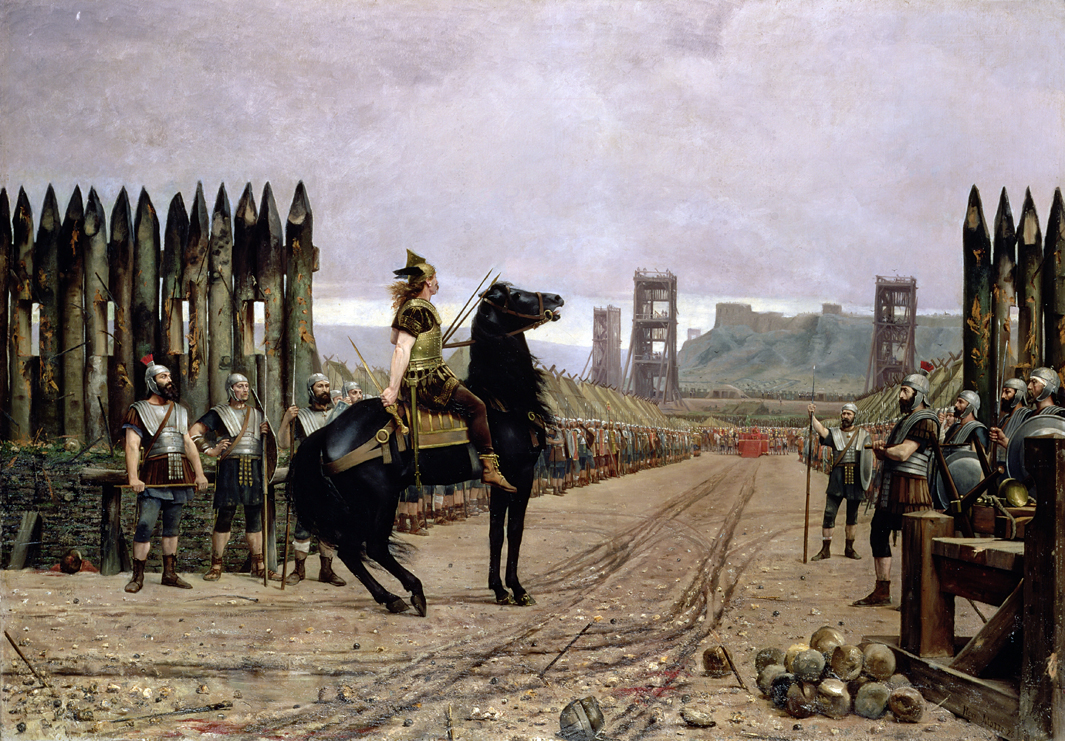
Vercingetorix Before Caesar, by Henri-Paul Motte, 1886. Vercingetorix led the last uprising of the Gallic peoples against Julius Caesar in 52 bc before the complete subjugation of Gaul. Musée Crozatier, Le Puy-en-Velay, France. Giraudon, The Bridgeman Art Library.
Stalin’s Five-Year Plan was based on a radicalized vision of the revolution as an unending “class struggle” with foreign and internal “enemies.” He spoke in violent terms about rooting out the final remnants of the capitalist economy, which, he claimed, had blocked the country’s progress to socialist industrialization. He accused his rivals of subscribing to the “dangerous” view that the class struggle would lessen over time and that “capitalist elements” could be reconciled with a socialist economy. This assumption, Stalin argued, would only lead the Soviet state to lower its defenses against its enemies, thus allowing them to infiltrate the system and subvert it from within. Stalin reasoned, on the contrary, that the resistance of the bourgeoisie was bound to intensify as the country moved closer to socialism, so that ever-growing vigor was required to “root out and crush the opposition of the exploiters.”
Stalin’s call for a return to the class struggle of the Civil War appealed to a broad section of the party’s rank and file, among many of whom the sense that the NEP represented a retreat from the revolution’s goals never disappeared. His rhetoric of industrial progress had a powerful appeal to all those lower-class Bolsheviks who as young men had fled the peasant world of “icons and cockroaches,” and who saw the revolution as an overturning of this legacy of poverty. Most of them had joined the party during the Civil War and had been promoted by Stalin. They were practical people, without much grasp of Marxist theory, whose allegiance to the Bolsheviks was intimately linked with their own identity as “proletarians.” They identified with Stalin’s simple vision of the Five-Year Plan as a new revolutionary offensive to overcome the country’s backwardness and make it a great industrial power in the world.
Stalin’s fighting words also had a special attraction to younger communists—those born in the first two decades of the century—who were too young to have fought in the Civil War but who had been educated in the “cult of struggle” based on stories about it. One Bolshevik (born in 1909) maintained in his memoirs that the militant worldview of his contemporaries had prepared them to accept Stalin’s arguments about the need for “renewed class war” against the “bourgeois specialists,” NEPmen, kulaks, and other “hirelings of the bourgeoisie.” Young communists had become frustrated with the NEP. “The Komsomols of my generation—those who met the October Revolution at the age of ten or younger—took offense at our fate,” explained one Stalinist. “When…we joined the Komsomol, when we went to work in factories, we lamented that nothing would be left for us to do: the revolution was over, the harsh but romantic years of the Civil War would not come again, and the older generation had left us only a boring, prosaic life devoid of struggle and excitement.”
Revolution can never be forecast; it cannot be foretold; it comes of itself. Revolution is brewing and is bound to flare up.
—Vladimir Lenin, 1918Here was the cohort of enthusiasts that would be the pioneers of Stalin’s “revolution from above,” the beginning of the revolution’s second generational phase.
If the NEP had lasted as long as Lenin had intended, it might have served as an example of socialist development in the Third World. Based on its buoyant agricultural sector, the Soviet economy grew rapidly between 1921 and 1928. Industry did well, arguably achieving higher rates of growth than in the 1930s. If the NEP had continued, the country would have been in a far stronger position to resist the Nazi invasion in 1941 than it was as a result of Stalin’s economic policies after 1928. The forced collectivization of agriculture was a catastrophe, ultimately leading to the terminal decline of the Soviet agricultural sector. In the early 1930s it resulted in the slaughter of half the country’s livestock by the peasantry (to prevent their being taken for the collective farms) and in the “terror famine” of 1932 to 1933, when demographers suggest that as many as 8.5 million people—most of them Ukrainians—died of starvation or disease as a result of over-requisitioning. It is little wonder if many of the peasants in Ukraine and Belarus welcomed Hitler’s troops as liberators from the “second serfdom,” which is what they called their miserable existence in the collective farms.
In this sense we should see the NEP as an opportunity the revolution missed—a chance to build a socialist society on more stable and less violent grounds than the killing fields of the Stalinist utopia.
